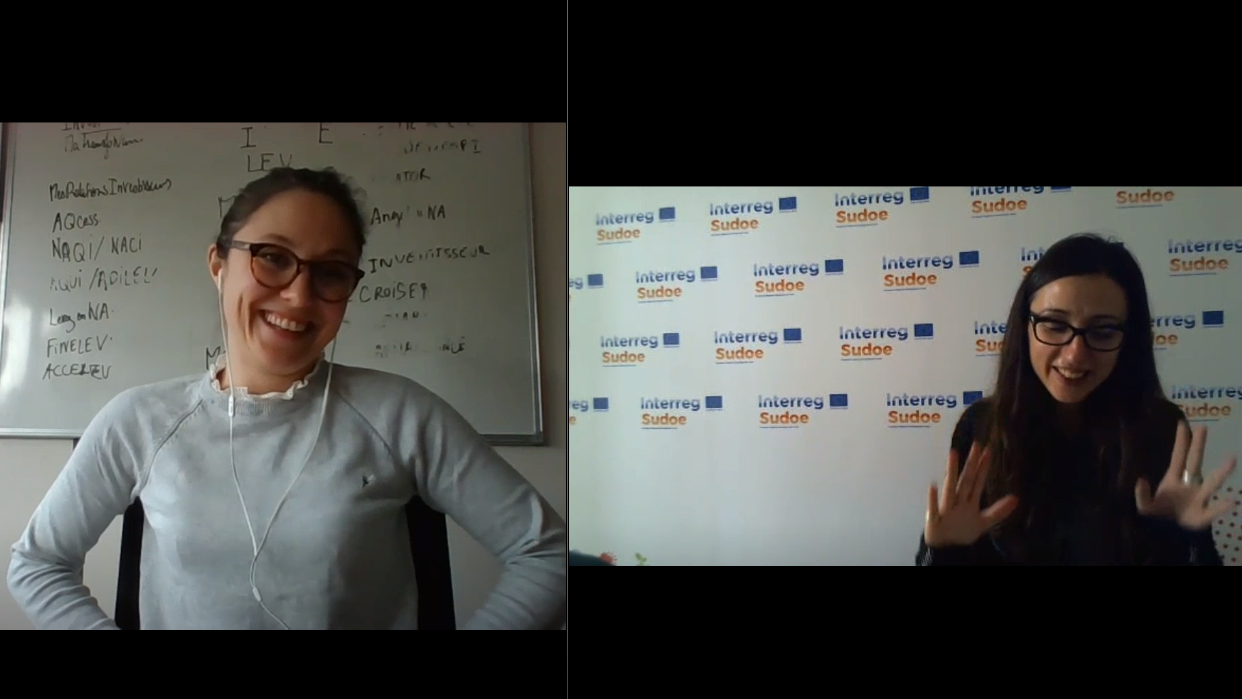Communication
Sudoe News
ICT4SILVER : “Today there is a digital gap, which affects both elder people and health professionals.”
Categoría Management of projects approved
This week, we interviewed Béatrice Durruty, the project manager of ICT4SILVER, a project on silver economy, which enables SMEs from Southwestern Europe to create and to commercialise products and services based on new technologies, adapted to elder people.

Interreg Sudoe (I.S): What is ICT4SILVER about?
Béatrice Durruty (B.D): ICT4SILVER is a project to accompany SMEs from Southwestern Europe to commercialise digital products and services addressed to the silver economy. When we talk about silver economy, we talk about elder people, health professionals and elder people’s families. This accompanying focuses on neither R&D nor the development of products but on the uses‘ studies and products ’testing, in real situations of testing, to identify things to be improved.
I.S Why did you focus on SMEs?
B.D: Because today, they are the biggest part of the Southwestern economic fabric. We think that every SME could be a silver economy SME. Here, we are talking about markets and not specific industries. For instance, even doors manufacturers by adapting their products to elder people, could have access to this market.
I.S: How did the transnational aspect benefit the project?
B.D: Every partner was at a different stage of development regarding the silver economy. The Spanish Basque Country was more advanced regarding uses and we were more advanced regarding the territory’s patterns. Therefore, we had the opportunity to complement our competences.
I.S: You worked directly with a specific sector of the population: elder people. In 2050, Southwestern Europe will have the older population in Europe. In your opinion, which challenges should we face regarding this question?
B.D: There are many challenges, both societal and organizational, as the organization of homecare services is difficult to manage. We saw that even if it is a shared problematic within Southwestern Europe, the response is territorial: we don’t solve the ageing issue in the same ways in the old town of Bordeaux, or in San Sebastien or in the Portuguese countryside. It is a huge challenge: we have to provide territorial solutions, to adapt better to the day-to-day of elder people. Another challenge is related to how we see the ageing question: we have to see it as an opportunity and not only as a challenge: it is an opportunity for SMEs to be innovative, an opportunity to diversify new markets and to respond to social and societal challenges through new technologies.
I.S: You contributed to the development of new technologies for elder people who are not necessarily very “high tech friendly”. How did it work?
B.D: There is a digital gap, which affects both elder people and health professionals. Today, a nurse in her/his day-to-day is not always making use of smartphones or tablets; therefore, we need to review those jobs. Nevertheless, it was very different from one product to another. There were products which were made with a lot of technologies but which were invisible. For instance, we had a teleassistance clock, very innovative, which allowed the geo-tracking but; above all, it looked as a clock. And because of that, the product has been very well accepted because we did not perceive the technology. But, if for instance, there was a product with “visible” technology, the users rejected it. It was a very huge challenge for the enterprises when they realized that they needed to mask the “tech” aspect to access the market. In another hand, we adapted ourselves to the level of digital gap. We spent a lot of time making surveys, mainly among the health professionals, regarding their digital level. We adapted ourselves to their situations, letting them the possibility to quit if they were not at ease. We concluded that the digital gap is more a question of social status than age.
I.S. Today, we can’t escape from digital technologies: they are more and more part of our lives. According to your experience, how could we eradicate this digital divide?
B.D: Today, we focus more on the SMEs accompanying regarding R&D and new products’ development. If tomorrow, we count on more assistance regarding investments in health facilities or homecare services to have new material which allows the use of new technologies, it would be a big step. It’s true that the break is cultural but also financial. So, for instance, if we can equip all a team of homecare nurses to use home-tracking softwares, we will have the opportunity to train the health professionals but first, we need to count on the material, if not, it would be useless.
I.S: What is the added value of ICT4SILVER?
B.D: The testing methodology we implemented was the same in every country: we tested the same products in the same ways, in Spain, France and Portugal, and we had the opportunity to compare the users from a country to another one, to identify the cultural barriers and to accompany better the enterprises. For instance, thanks to the uses’ studies, we saw that the French “kinésithérapeute” does not exist in Spain and Portugal and thanks to that the enterprises could adapt themselves, and in particular their communication and marketing strategy.
IS: Your project is finished. Very briefly, which were the results?
BD: We developed a testing methodology that we will extend to other areas and countries. We accompanied 15 enterprises in the adaptation of their products: it is still too early to measure the impact. Also, we exchanged more with our partners and deepened our relations that we will keep developing after the project.
IS: How did elder people welcome the project?
BD They liked it and thought it was fancy to test the same products in the three countries. Users were happy to take part in a European project. For instance, we tested speakers-pillows in a retirement house and people was pleased to test the product.
IS: According to what you lived through ICT4SILVER, what do you think we should/could do to adapt better our policies to the silver economy challenges?
BD Today we accompany a lot the SMEs without really assessing their products. I think that policies should accompanied more the SMEs in their products’ evaluation with commercial purposed and regarding their efficiency.
IS: And regarding the next steps of ICT4SILVER?
BD: we are thinking in an alliance between clusters and living labs at a larger scale than Southwestern Europe to extend the methodology that we defined. We would like to replicate what we did in another scale. For instance, if a German enterprise would like to test its product in Spain, France, Portugal or another place, it could count on a contact point to make its uses’ study and access to the market easier.
Thanks a lot Béatrice!
For more information, have a look to ICT4SILVER website: https://www.ict4silver.eu/?lang=fr



